Electrical Insulator is an important part for power line construction. It is often installed on the power towers, shafts or various constructions. They can hold the electric stream back from spilling to the undesirable location from the overhead conductors. We can also call an electrical insulator or a power insulator.
The power line insulator is for the telephone pole as well.
The material of the electrical insulator is not the same as conduits and semiconductors. The electric charges can’t go through the electrical insulator.
Table of Contents
- Materials of Electrical Insulator
- Types of Electrical Insulator
- Features of Transmission Lines Insulators
Materials of Electrical Insulator
There are various kinds of materials for making electrical insulators.
The most widely recognized materials includes Porcelain, Ceramic, silicon elastic, Polymer, and Glass.
Each of these protecting materials has distinctable physical protecting properties. Thus, you need to know the properties of the electrical insulator before picking it.
The following part inoduces the materials of insulator in detail.
Glass insulator and Porcelain Insulators:
Glass insulator is the earlist insulator in the world. It appears in 18th century. It is similiar with a telegraph. In 19th century, procelain and ceramic insulator introduced to the world. After that, glass insulator dimished for a while.
To overcome this problem, experts improve the quality of the glass insulator. They expand the life span of the glass insulator. Then, the advanced glass insulator are often used today. Compared with other type of insulator, glass insulators present a long lifespan.
Polymeric Insulator:
Polymer insulators contain a fiberglass bar layered by polymer weather patterns sheds. These polymer atmospheric conditions sheds are from silicon versatile. Weather pattern sheds are made from a variety of materials, including polytetrafluoroethylene, EPDM, EPM, and others. Polymer insulators are inconsistently introduced as silicon flexible insulators or composite insulators. They are around 90% lighter than porcelain types in any case invigorate.
Some specifications you should know about the insulator when you purchasing them:
-High mechanical strength to support the load
-High electrical resistance to prevent the leakage of current
-The insulating material should be non-porous
-The material should be free of impurities
After checking the four properties above, you need to make sure other qualifications.
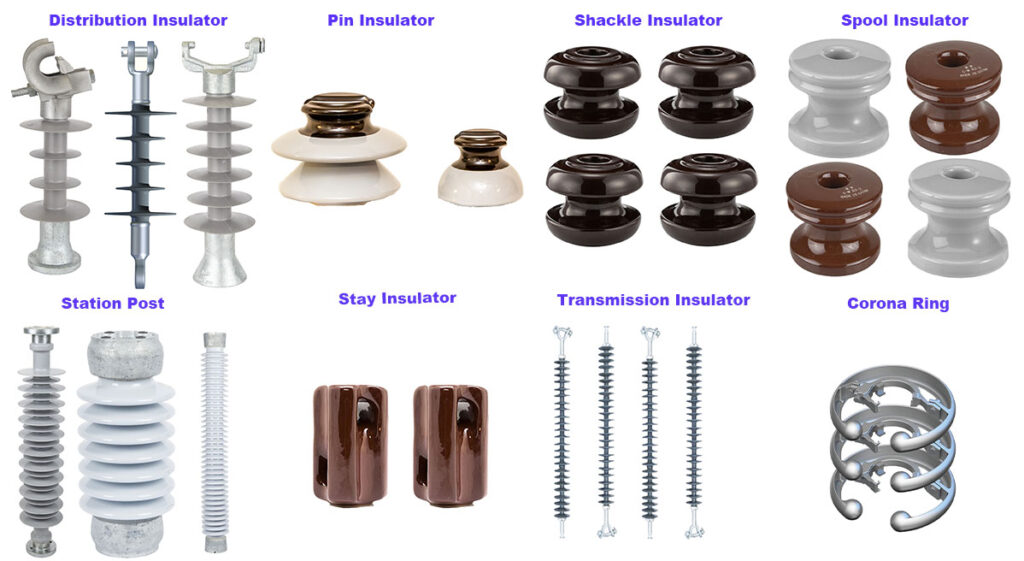
Types of Electrical Insulator
Pin Insulator
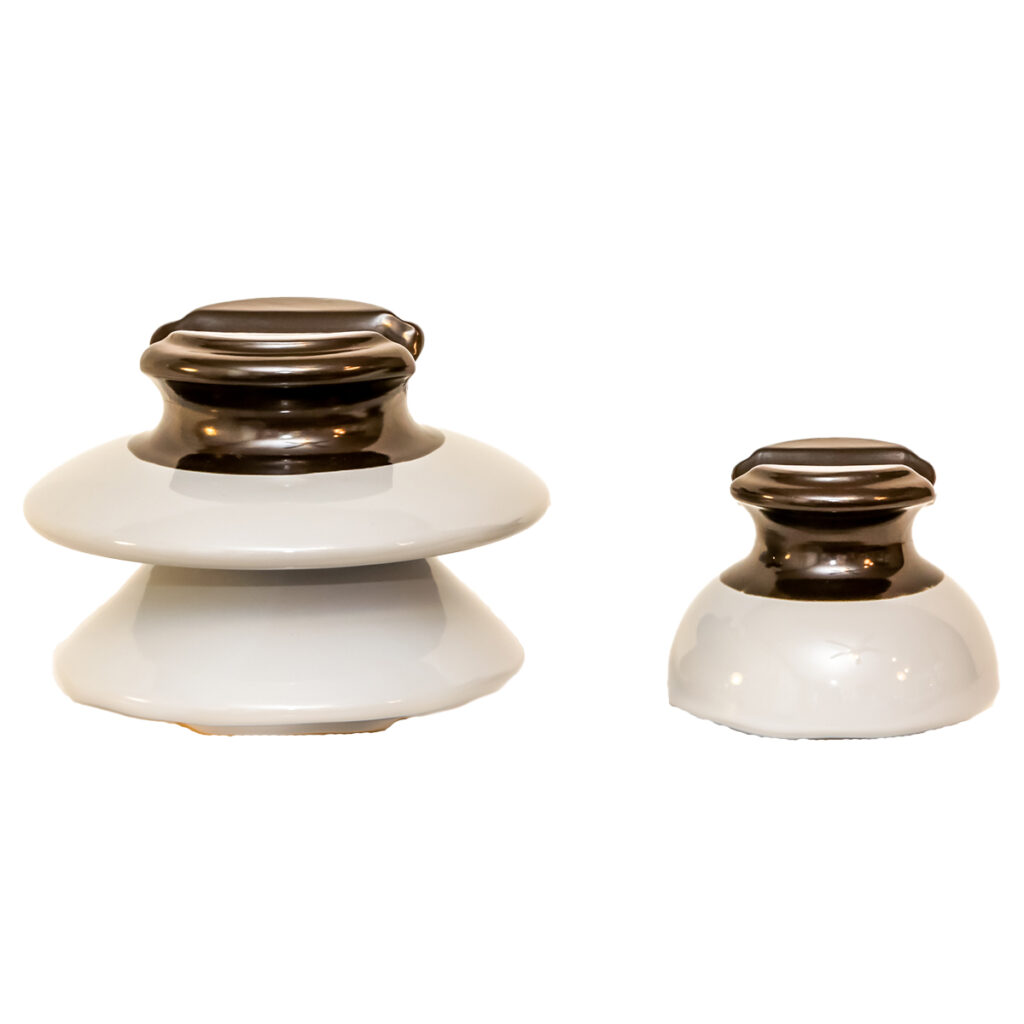
| Main Dimension(mm) | H | 109 | 133 | 165 | 191 | 245 | ||||
| h | 48 | 48 | 52 | 52 | 53 | |||||
| D | 102 | 140 | 230 | 267 | 320 | |||||
| d | 18.3 | 18.3 | 27.8 | 27.8 | 27.8 | |||||
| R1 | 9.5 | 13 | 19 | 19 | 19 | |||||
| R2 | 9.5 | 9.5 | 14 | 14 | 16 | |||||
| Nominal Voltage kV | 3.6/6.6 | 11 | 22 | 33 | 33 | |||||
| Creepage Distance/mm | 150 | 255 | 432 | 533 | 900 | |||||
| Low Frequency Voltage(kV) | Dry withstand | 50 | 50 | 65 | 65 | 100 | 100 | 120 | 120 | 200 |
| Wet withstand | 30 | 30 | 45 | 45 | 65 | 65 | 70 | 70 | 95 | |
| Puncture | 95 | 95 | 135 | 135 | 160 | 160 | 170 | 170 | 185 | |
| Cantilever Strength (kN) | 11 | 11 | 11 | 13 | 10 | |||||
Post Insulator
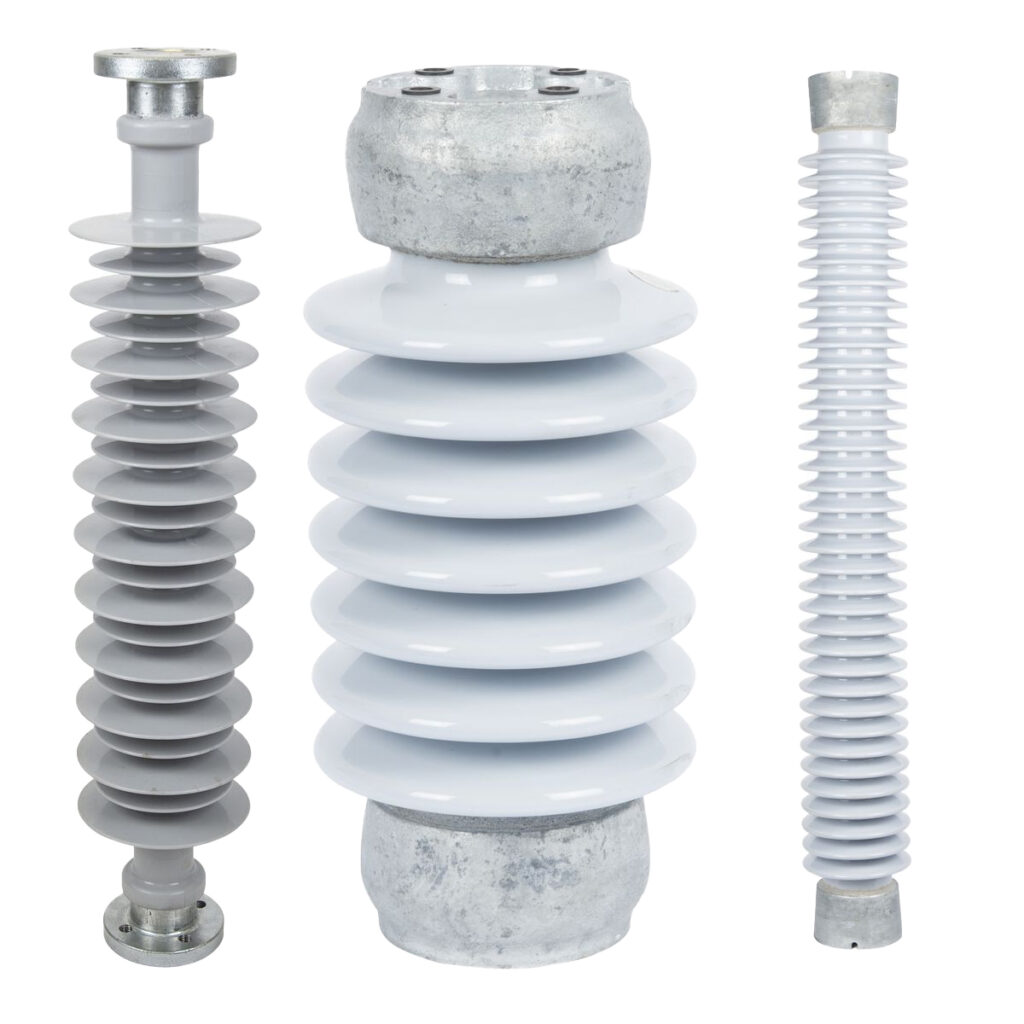
| Creepage distance,mm | 356 | 559 | 737 | 1015 | 1145 | |
| Dry arching distance | 165 | 241 | 311 | 368 | 438 | |
| Cantilever Strength,Kn | 12.5 | 12.5 | 12.5 | 12.5 | 12.5 | |
| Lower Frequency Flashover Voltage | Dry,kv | 80 | 110 | 125 | 150 | 175 |
| Wet,kv | 60 | 85 | 100 | 125 | 150 | |
| Critical Impulse Flashover Voltage | Pos.,kv | 130 | 180 | 210 | 255 | 290 |
| Neg.,kv | 155 | 205 | 260 | 340 | 380 | |
| RIV Data | Test volt. To ground,kv | 15 | 22 | 30 | 44 | 44 |
| Max RIV at 1000 KHz,Uv | 100 | 100 | 200 | 200 | 200 | |
Shackle Insulator
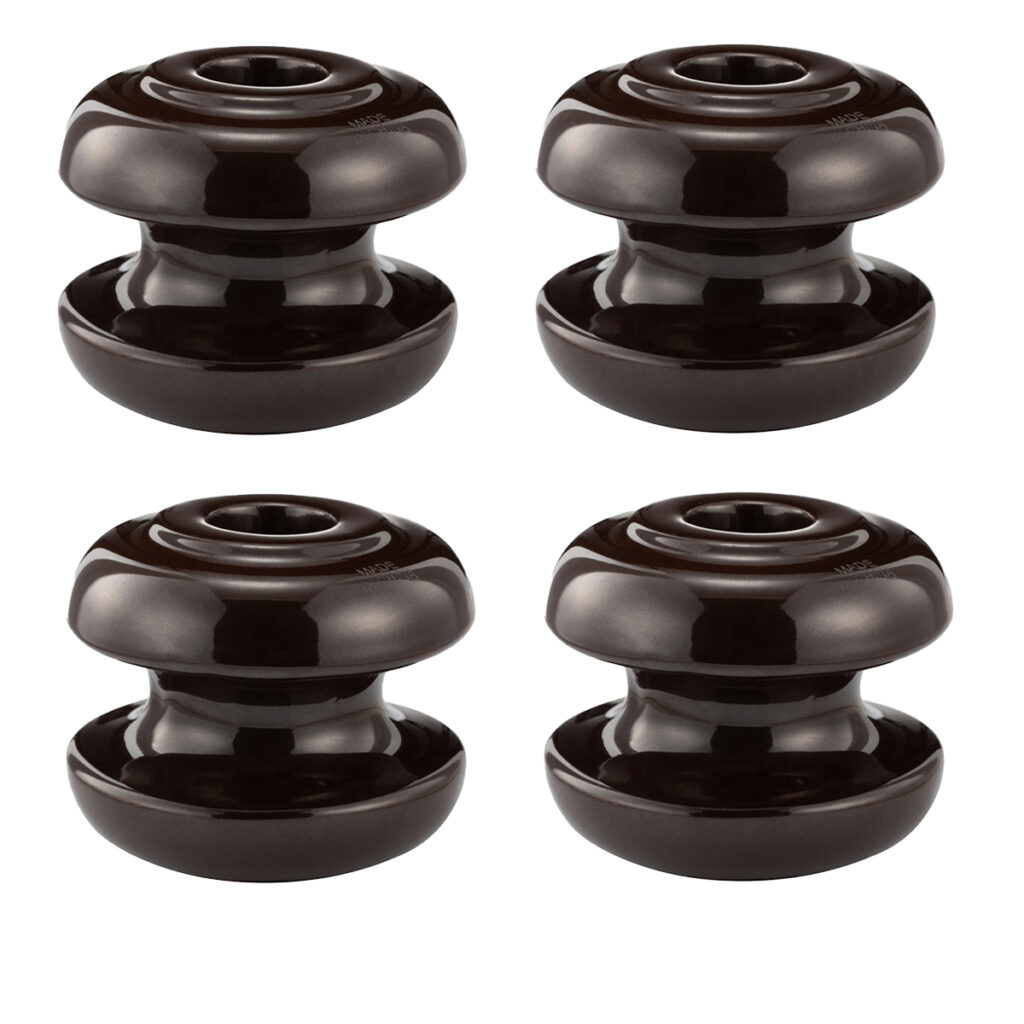
| Main Dimensions (mm) | Mechanical Failing load (kN) | Power frequency Flashover Voltage(kV) | ||||||
| H | D | d | d1 | d2 | R | Dry | Wet | |
| 88 | 100 | 57 | 18 | 13 | 17.8 | 26 | 14 | |
| 100 | 114 | 63 | 21 | 16 | 22.25 | 35 | 9 | |
| 76 | 89 | 83 | 48 | 17.5 | 10 | 13 | 25 | 12 |
| 76 | 92 | 92 | 55 | 18.5 | 9 | 13 | 25 | 12 |
| 76 | 90 | 76 | 50 | 19 | 9.5 | 13 | 25 | 12 |
| 76 | 89 | 76 | 50 | 21 | 9.5 | 13 | 25 | 12 |
| 76 | 89 | 83 | 48 | 21 | 10 | 13 | 25 | 12 |
| 80 | 80 | 50 | 22 | 6 | 13.5 | 25 | 12 | |
Stay Insulator
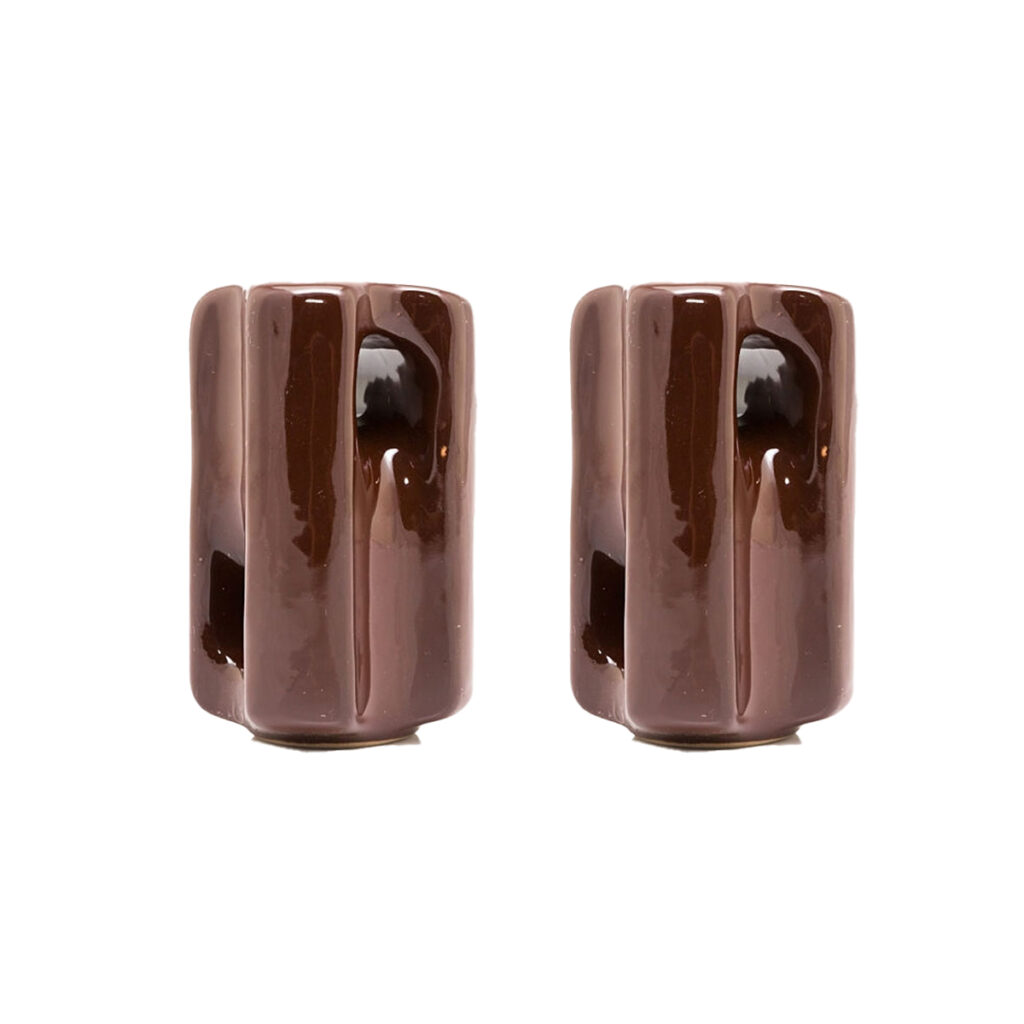
| Main Dimensions(mm) | H | 89 | 108 | 140 | 172 |
| h | 44 | 57 | 67 | 79 | |
| h1 | 64 | 76 | 103 | 114 | |
| D | 64 | 73 | 86 | 89 | |
| d | 44 | 54 | 60 | 60 | |
| d1 | 16 | 22 | 25 | 25 | |
| Mechanical Failing Load(KN) | 44 | 53 | 89 | 89 | |
| Creepage Distance (mm) | 41 | 47 | 57 | 76 | |
| Minimum Flashover Voltage | Power-frequency | 25 | 30 | 35 | 40 |
| 12 | 15 | 18 | 23 | ||
| Weight (KG) | 0.5 | 0.63 | 1.2 | 1.85 | |
Features of Transmission Lines Insulators
Here are some distinct features of the PowerTelcom insulators:
-Lightweight: Despite being produced using quality material, these insulators convey least weight. This simplifies them to manage when appeared differently in relation to most standard dirt insulators.
-High impact obstacle: Insulators in power system incorporate quality structure to ensure that they are not affected by real impact. This component makes them ideal for different sorts of conditions. They are also shock and vibration attempted.
-High voltage obstacle: As expected, the insulators can go against high voltage. This makes them relevant to an extensive variety of the electrical power structure.
-Hand creates: Although the insulators come in standard plans, you are permitted to interest for uncommonly specialties, and we will benefit them. All you need is to send us the information about the best arrangement.
-Air permeability: These insulators incorporate an astonishing air vulnerability. This basically infers that they license a steady movement of air through them. The inspiration driving permeability is for heat the leaders, especially on high voltage power transmission lines.
-Strong and solid: the insulators are sturdy and reliable for quite a while. They also attract least help cost.
Factors to Consider When Choosing Overhead Line Insulators